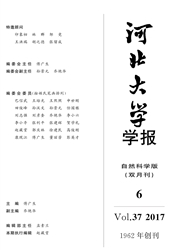

 中文摘要:
中文摘要:
摘要:汶川地震震后调查发现:RC框架结构出现了与“强柱弱梁”设计目标不相符的“强梁弱柱”破坏形式.国内外学者研究表明:造成该现象的主要原因之一是目前抗震设计对现浇楼板使梁端负弯矩承载力增强考虑不充分造成的,有必要研究该影响程度.目前常用的研究方法有实验和有限元数值仿真2种,后者相对于前者更方便和简洁,但正确性较难保证.本文以非线性有限元软件ABAQUS为平台、通过框架结构中节点有限元模型的建立详细论述了各个参数的定义;随后对中节点进行了单调荷载下数值模拟,得到梁端荷载-位移曲线并与低周反复荷载实验的骨架曲线进行对比,发现两者基本吻合,从而验证了模型的正确性,为进一步研究RC框架结构屈服机制提供了合理的技术手段.
 英文摘要:
英文摘要:
The survey of Wenchuan earthquake found that RC frame had emerged "strong columnweak beam" yield mechanism, but not "strong beam--weak column" which was the design goals. Studies showed: inadequate consideration of floor slab on of beam negative moment capacity enhancement in seis mic design was the one of main causes. Therefore it was necessary to study the influence of cast-in-place floor on the beam flexural capacity. Now research methods have two ways of test method and numerical simulation, and the latter is more convenient and simple, but more difficult to guarantee the correctness compared with the former. So in this paper, in the platform of nonlinear finite element software ABAQUS, through the creation of the frame joint model, the parameters are discussed in detail, then the frame joint under monotonic loading have simulated. The results are basically consistent with the skeleton curve of test, which verify the correctness of the model. It provides a reasonable ways to further study the mechanism of RC frame structure yield technical.
 同期刊论文项目
同期刊论文项目
 同项目期刊论文
同项目期刊论文
 期刊信息
期刊信息
